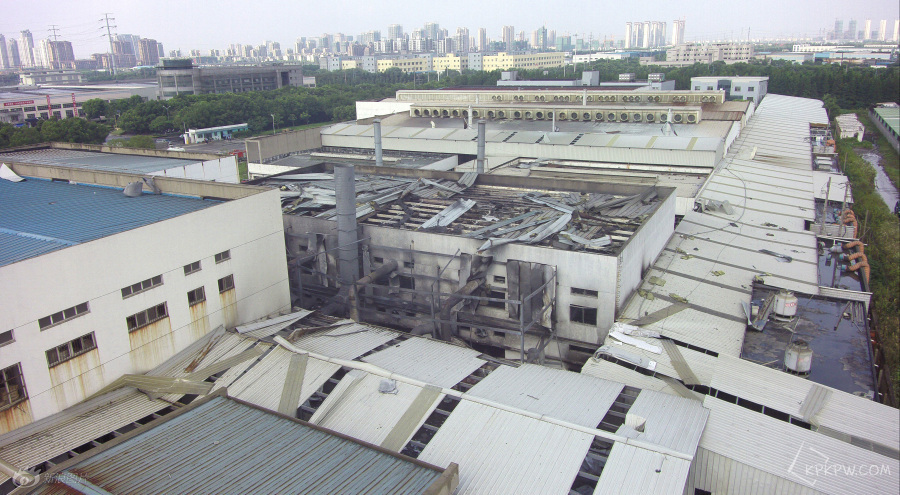By Alex Lowery, Contributing Editor.
The accumulation of aluminum fines in manufacturing spaces is commonplace throughout the industry. Polishing, cutting, grinding, sawing, casting, shredding, melting, sanding, and conveyance are among the activities that can generate aluminum fines. For decades, aluminum fines were simply considered a nuisance—just a housekeeping issue to be swept up and placed in a dumpster. Fines were only considered a safety concern when they accumulated on the work floor, causing workers to slip and fall.
Attitudes started to change in May 2011 when the world learned of an explosion at Foxconn, a supplier to Apple. The explosion at Foxconn’s plant in Chengdu, China, killed four and injured 18. In Apple’s “Supplier Responsibility 2012 Progress Report,” it was stated that the root cause “involved combustible dust” during the manufacture of iPads. Over the course of the next two years, several smaller aluminum fines explosions occurred that again made international news.
Even so, many in the industry did not take the hazard seriously—until one of the worst tragedies occurred. When an aluminum fines explosion happened at Suzhou Kunshan Zhongrong Metal Products Company’s aluminum alloy automobile wheel grinding plant in Jiangsu province, China, in 2014, the governmental investigative report afterwards stated that “a total of 97 people died and 163 people were injured.” Years later, the Chinese government and media reports would revise the death toll to over 200 workers. This tragedy brought a renewed focus by companies, government safety organizations, and even insurance companies on the hazards associated with aluminum fines in workplaces.

The Three Hazards of Aluminum Fines
The Aluminum Association published its Guidelines for Handling Aluminum Fines Generated in Various Aluminum Operations in 2015. The guidelines state, “If particles are larger than 420 microns (40 mesh), an explosion or flash fire is less likely. It is more likely, however, that a mixture of coarse and finer material will be generated, and if a fraction is 420 microns or finer, then the mixture has the potential for an explosion or flash fire.”
According to the guidelines, aluminum companies need to be aware that three primary hazards are associated with aluminum fines, including fire, flash fire, and explosions. Understanding what conditions are needed for each of these three primary hazards to occur will provide companies the necessary knowledge to prevent them from occurring.
First, for an aluminum fine fire to occur, the material has to be combustible, oxygen must be present, and an ignition source must be nearby to ignite the fire. A common example would be when a molten metal spill comes into contact with aluminum fines under a furnace and ignites the fines.
Second, for a flash fire to occur, the aluminum fines (within explosive range) need to be suspended in the air, creating a dust cloud. This occurred when maintenance personnel were on top of an operating holding furnace roof. Not understanding the danger, they swept the aluminum fines off. This action resulted in the formation of a cloud of aluminum fines. The cloud slowly descended to the ground passing by an open furnace door. The molten metal provided an ignition and the resulting flash fire burned nearby workers.
The third and final primary hazard involving aluminum fines is an explosion. An explosion can happen when a flash fire occurs in a confined or physically constrained area. In the tragic event discussed earlier, the physically constrained area in the Suzhou Kunshan Zhongrong explosion was the two-story building itself (e.g., walls, roof, etc.). Once the aluminum fines were airborne throughout the entire building, the conditions were such that only an ignition source was needed (in this case, investigators believe it was an electric motor).
Ensuring Safety
Most companies that suffer an aluminum fine explosion have failed to perform regularly scheduled hazard assessments on aluminum fines generation and accumulation in their workplaces. This assessment is not complicated. Simply gather samples throughout the workplace and keep records on when and where the samples were taken. An independent laboratory can then conduct explosivity testing of the samples as per the National Fire Protection Association’s (NFPA) 484: Standard for Combustible Metals.
Depending on the test results, the next course of action may include altering engineering and or administrative control to mitigate the generation and accumulation of explosive aluminum fines. Engineering controls would focus on the proper collection and disposal of aluminum fines. Dust collection systems should be inspected and periodically cleaned to prevent the accumulation of aluminum fines. Duct work should be as short as possible and lead to a dust collector located outside of the building. Dust collectors should be fenced off to minimize workers getting too close.
Administrative controls focus on good housekeeping, training, and educating workers on how to properly collect aluminum fines while preventing them from becoming airborne. Aluminum workers and local fire department personnel should be trained on a regular basis to properly and safely extinguish an aluminum fines fire. Only a Class D fire extinguisher should be used to extinguish these fires. Any other method of extinguishing may result in the dust being propelled in the air, resulting in a flash fire or explosion.
Conclusion
The consequences of not acknowledging aluminum fines hazards in aluminum workplaces can be deadly. Only through regular schedule hazard assessments, training, and education will these incidents finally stop occurring.
Editor’s Note: This article first appeared in the February 2022 issue of Light Metal Age. To receive the current issue, please subscribe.
